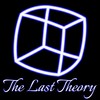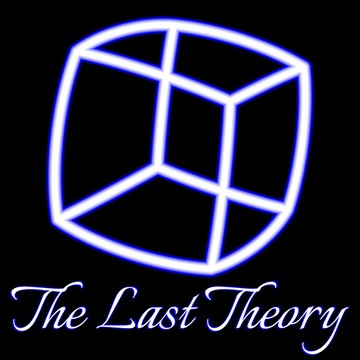

The Last Theory
Mark Jeffery
The Last Theory is an easy-to-follow exploration of what might be the last theory of physics. In 2020, Stephen Wolfram launched the Wolfram Physics Project to find the elusive fundamental theory that explains everything. On The Last Theory podcast, I investigate the implications of Wolfram's ideas and dig into the details of how his universe works. Join me for fresh insights into Wolfram Physics every other week.
Episodes
Mentioned books

May 4, 2023 • 11min
How to knit the universe
Now that I’ve introduced you to the different kinds of edges that might make up a hypergraph – unary, binary and ternary edges, as well as loops and self-loops – we can have some fun.Some of rules in the Wolfram model give rise to fascinating universes.Today, I’m going to show you a few rules that seem to fabricate space itself in much the same way as knitting needles might fabricate a blanket.And if you think that knitting is a far-fetched analogy, just wait until you see my animations!–I release The Last Theory as a video too! Watch here.The full article is here.Kootenay Village Ventures Inc.

Apr 22, 2023 • 9min
Animating the hypergraph with Dugan Hammock
Dugan Hammock creates beautiful animations of three-dimensional cross-sections through four-dimensional spaces.But his animations aren’t mere mathematical abstractions. He has also applied his geometrical skills to animating the hypergraph of Wolfram Physics, in such a way that it doesn’t jump from frame to frame.In this second part of my recent conversation with Dugan, we talk about his extending spring-electrical embedding into an additional time dimension......and we show some of the beautifully smooth animations that come out of it.—Dugan HammockDugan Hammock’s videos on YouTubeDugan Hammock on TwitterDugan Hammock at The Wolfram Physics ProjectPlotting the evolution of a Wolfram Model in 3-dimensionsTemporally coherent animations of the evolution of Wolfram Models People and concepts mentioned by DuganCoulomb’s lawHooke’s lawSpring-electrical embeddingCharles Pooh—I release The Last Theory as a video too! Watch here.Kootenay Village Ventures Inc.

Apr 8, 2023 • 13min
Causal invariance versus confluence with Jonathan Gorard
Causal invariance is one of the most important concepts in the Wolfram model... and one of the most difficult to capture.So I really wanted to hear Jonathan Gorard’s take on it.In this excerpt from our conversation, Jonathan addresses the differences between causal invariance and confluence.Causal invariance means that regardless of the order in which a rule is applied to the hypergraph, the same events occur, with the same causal relationships between them.Confluence, on the other hand, is the coming-together of different branches of the multiway graph.Jonathan explores different ways we might determine whether two nodes, two edges or two hypergraphs are the same, and explains that if we identify nodes and edges according to their causal histories, then causal invariance and confluence become the same idea.I’ve found myself listening to Jonathan’s explanation of causal invariance over and over to make sense of it, but it’s one of the areas where I’m convinced Jonathan has a unique contribution to make.—Jonathan Gorard • Jonathan Gorard at The Wolfram Physics Project • Jonathan Gorard at Cardiff University • Jonathan Gorard on Twitter • The Centre for Applied Compositionality • The Wolfram Physics ProjectConcepts mentioned by Jonathan • Causal invariance • Multiway system • Causal structure • Causal Set Theory • Directed acyclic graph • Isomorphic • Space-like separation • Simultaneity and simultaneity surfaces in relativity • Lorentz invariance • Poincaré invariance • Conformal invariance • Diffeomorphism invariance • General covariance • Confluence • Church-Rosser Property—I release The Last Theory as a video too! Watch here.Kootenay Village Ventures Inc.

Mar 26, 2023 • 11min
Loops and self‑loops in the hypergraph
So many of the most complex and most promising graphs and hypergraphs of Wolfram Physics involve loops and self-loops.They can play a crucial role in the evolution of graphs and hypergraphs... which means that they might play a crucial role in the evolution of the universe itself.Loops and self-loops matter, because including them in our models reduces the number of arbitrary assumptions we need to make in Wolfram Physics, making it more complete.–I release The Last Theory as a video too! Watch here.The full article is here.Kootenay Village Ventures Inc.

Mar 16, 2023 • 7min
Living in the fourth dimension with Dugan Hammock
Dugan Hammock lives in the fourth dimension.As Jonathan Gorard mentioned in our recent conversation on How to draw the hypergraph in Wolfram Physics, Dugan has worked on plotting the evolution of the hypergraph over time.We get into that in the second part of our conversation, but in this first part, I get to know Dugan as a mathematician and artist.Enjoy his amazing animations of three-dimensional cross-sections through four-dimensional hypershapes!—Dugan HammockDugan Hammock’s videos on YouTubeDugan Hammock on TwitterDugan Hammock at The Wolfram Physics ProjectPlotting the evolution of a Wolfram Model in 3-dimensionsTemporally coherent animations of the evolution of Wolfram Models People mentioned by DuganMax CooperGeorge K. FrancisWilliam Thurston—I release The Last Theory as a video too! Watch here.Kootenay Village Ventures Inc.

Feb 23, 2023 • 10min
Why I changed my mind about computational irreducibility with Jonathan Gorard
Computational irreducibility means that there are no shortcuts when we apply rules to the hypergraph.I used to think that our existing theories of physics, such as general relativity and quantum mechanics, were examples of computational reducibility: shortcuts that allow us to make higher-level generalizations about how the application of rules to the hypergraph gives rise to our universe.Jonathan Gorard used to think this, too.But it turns out that over the last couple of years, he has changed his mind on this quite radically.General relativity and quantum mechanics, he now thinks, aren’t examples of computational reducibility, they’re consequences of computational irreducibility.I truly appreciated this part of our conversation, because it radically changed my mind, too, about this crucial concept in Wolfram Physics.—Jonathan GorardJonathan Gorard at The Wolfram Physics ProjectJonathan Gorard at Cardiff UniversityJonathan Gorard on TwitterThe Centre for Applied CompositionalityThe Wolfram Physics ProjectConcepts mentioned by JonathanComputational reducibilityComputational irreducibilityGeneral relativityQuantum mechanicsFluid mechanicsContinuum mechanicsSolid mechanicsPartition functionBoltzmann equationMolecular chaos assumptionErgodicityDistribution functionChapman-Enskog expansionStress tensorNavier-Stokes equationsEuler equations—I release The Last Theory as a video too! Watch here.Kootenay Village Ventures Inc.

Feb 9, 2023 • 15min
What’s beyond the universe?
There are two questions about Wolfram Physics I’m asked a lot:What’s beyond the hypergraph?And what’s between the nodes and edges of the hypergraph?There’s a simple answer to this question.Nothing.There’s nothing beyond the hypergraph.There’s nothing beyond the universe.But it’s not a very effective answer.So here’s a deeper response to the age-old question:What’s beyond the universe?–I release The Last Theory as a video too! Watch here.The full article is here.Kootenay Village Ventures Inc.

Jan 26, 2023 • 8min
How to draw the hypergraph in Wolfram Physics with Jonathan Gorard
The hypergraph is the universe.So if we want to see the universe, we need only draw the hypergraph.The question is: how?The nodes and edges of the hypergraph are determined by the rules of Wolfram Physics. But how we draw those nodes and edges is not determined.The drawing of the hypergraph is not the universe, it’s just a way of visualizing the universe.So I asked Jonathan Gorard how we might decide where to position the nodes and edges when we draw the hypergraph, so that we can see what’s really going on in Wolfram Physics.—Jonathan GorardJonathan Gorard at The Wolfram Physics ProjectJonathan Gorard at Cardiff UniversityJonathan Gorard on TwitterThe Centre for Applied CompositionalityThe Wolfram Physics ProjectPeople mentioned by JonathanCharles PoohDugan HammockPlotting the evolution of a Wolfram Model in 3-dimensions by Dugan HammockTemporally coherent animations of the evolution of Wolfram Models by Dugan HammockConcepts mentioned by JonathanSpring electrical embeddingSpring embeddingLayered embeddingCausal graphsCoulomb’s lawHooke’s law—I release The Last Theory as a video too! Watch here.Kootenay Village Ventures Inc.

Jan 19, 2023 • 9min
What is the Big Bang in Wolfram’s universe?
What is the Big Bang in Wolfram Physics?There’s a straightforward answer to that question.It’s the point in the evolution of the universe where the hypergraph goes from nothing to something.It’s the start of the explosion that eventually yields the uncountable particles, planets, stars and galaxies of our universe.So that’s pretty straightforward, isn’t it?Well, yes, except that there’s one phrase above that demands further explanation: nothing to something.How does the universe go from nothing to something?–I release The Last Theory as a video too! Watch here.The full article is here.Kootenay Village Ventures Inc.

Jan 5, 2023 • 7min
Graphs v hypergraphs in Wolfram Physics with Jonathan Gorard
Here’s a slightly technical question:Does Wolfram Physics really need hypergraphs?Or could it based on graphs instead?Jonathan Gorard shares some interesting insights into the evolution of Stephen Wolfram’s model for a fundamental theory of physics.Wolfram started with trivalent graphs, in which each edge joins two nodes, and each node has three edges.But when he ran into issues implementing simulations using these simple graphs, he solved the problem by graduating to hypergraphs, in which each hyperedge can join any number of nodes, and each node can have any number of hyperedges.Here’s how hypergraphs, rather than graphs, came to be the basis of Wolfram Physics.—Jonathan GorardJonathan Gorard at The Wolfram Physics ProjectJonathan Gorard at Cardiff UniversityJonathan Gorard on TwitterThe Centre for Applied CompositionalityThe Wolfram Physics ProjectConcepts mentioned by JonathanTrivalent networks (a.k.a. cubic graphs)Mathematica—I release The Last Theory as a video too! Watch here.Kootenay Village Ventures Inc.


